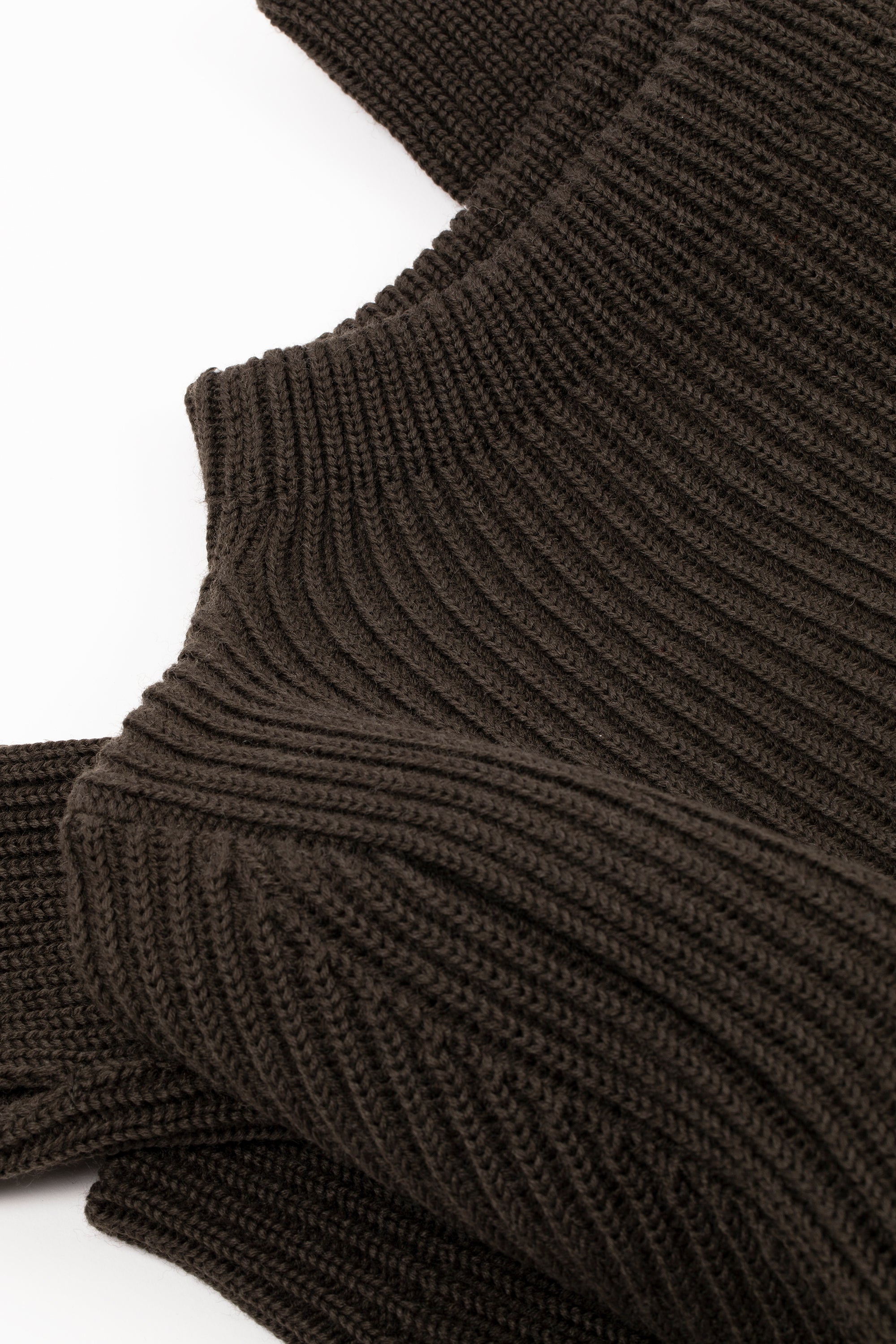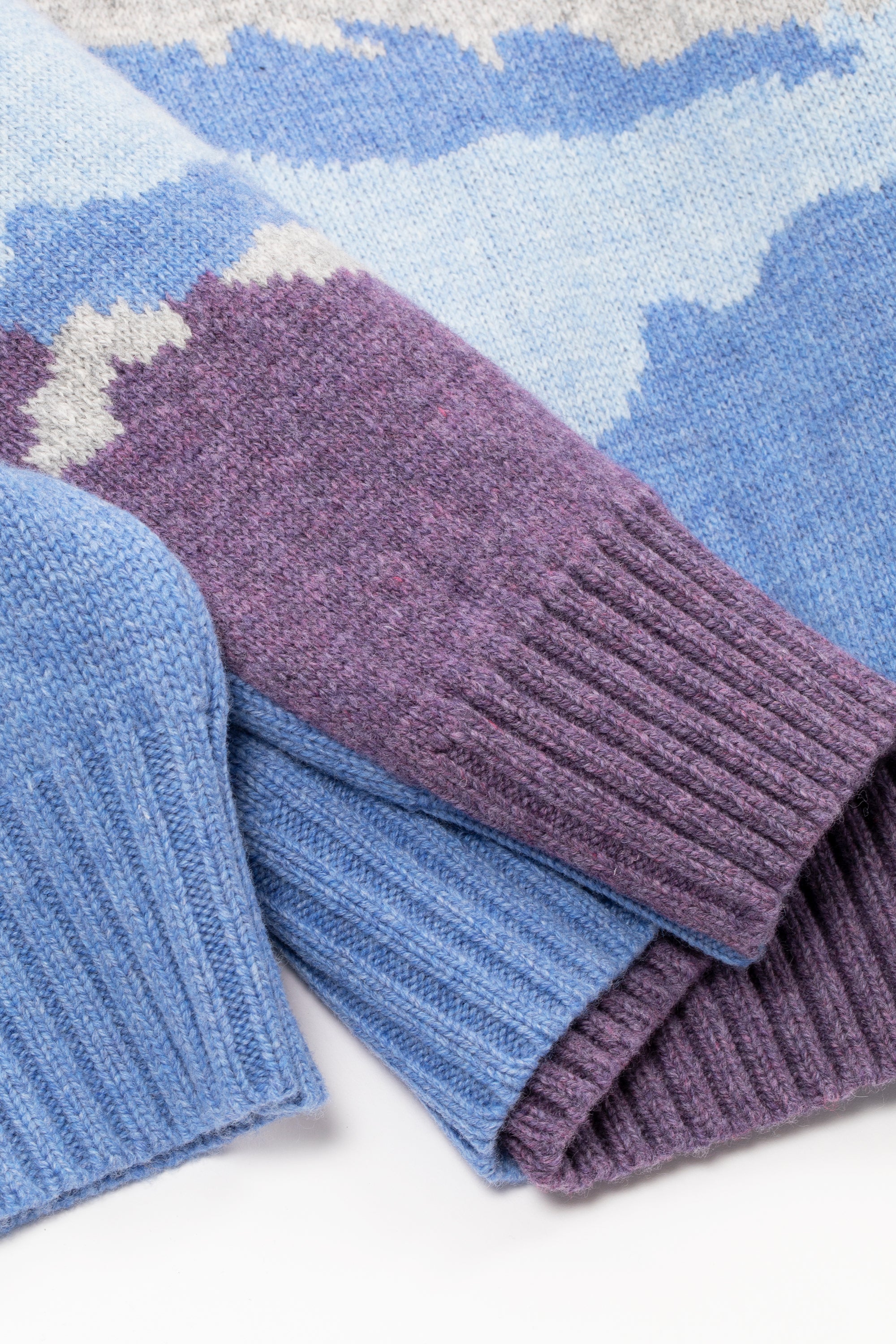Caring for Wool
As we move towards autumn, many of us will be thinking about adding new pieces of knitwear to our wardrobes. On chilly days few things can compare to the comfort of snuggling into a beautiful wool sweater, and if that sweater also happens to be made in Scotland, then even better! With that in mind, we thought it would be useful to put together a guide on how to care for your much loved knits so that they stay looking their best for many years to come.
Why choose wool?
Wool is a 100% natural fibre. The average sheep will produce anywhere from 2 to 30 pounds of fleece per year, depending on the breed. Wool is also renewable and biodegradable. These are some of the reasons that The Campaign for Wool initiative was set up in 2010 to highlight all of the positives of the wool industry, and the garments and textiles which are produced from wool.

What to expect from new wool
We have many weights of wool within our collections from Harley of Scotland and Jamieson’s of Shetland. One of our most popular is Harley’s Superfine Lambswool sweaters. The luxurious fibres of the superfine grade lambswool used in these sweaters are shorter staple fibres gently twisted as woollen spun yarns in order to preserve their luxurious handle and light weight.
With this in mind, some pilling can be expected from these products in the initial stages of wearing. Pilling is a natural occurrence on a newly knitted garment as the extraneous loose fibres in the twist are shed through the first wear. The gentle use of a cashmere comb will remove these excess pilled fibres and the process will settle once the garment is in regular use and excess fibres are shed.
Pilling is not a sign of poor quality (quite the opposite in fact!) but simply an inevitable part of owning a product in a soft and light yarn which is woollen spun for softness and loftiness of handle.

Why hand washing is best
We’ve all been there, you go to wash your new sweater for the first time and question the label which states ‘Hand Wash’. However, I think most of us will have had an experience where washing by machine was too aggressive, and have ended up with a shrunken garment.
Although many machines have ‘Hand Wash’ and ‘Delicate’ cycles, they are unlikely to be as gentle as washing by hand. Likewise, never be tempted to use anything but a dedicated wool wash detergent for your knitwear. These products are designed not to strip the natural oils from the wool, so you should find that the fibres remain soft and luxurious.
How you dry your knitwear after washing is also important. Again, don’t be tempted to pop your sweater on a spin cycle in the machine. This amount of agitation of the fibres will cause them to lock together and become felted. Instead, we recommend gently squeezing (not wringing) the excess water out of your sweater, then placing it on a clean towel. Carefully roll the towel and let it absorb more of the water, then lie the sweater on a flat surface away from heat or sunlight. Gently reshape the sweater at this point, then allow it to dry.

Don’t over wash
The natural oils in wool mean that it doesn’t require washing as often as you may think. It’s breathable, and is excellent at wicking away perspiration before odours develop. Allowing your knits to air between wearing keeps them fresh, and having several on a rotation will also mean you can allow longer periods between washing.
Never spray fragrances directly onto your knitwear. The alcohol content of many perfumes will cause damage to wool over time. Keeping lavender bags in the drawer where you store your knitwear is also a good alternative to keep them smelling good, and may also help to keep moths at bay.

Knitwear storage
One of the best ways to avoid your sweaters from becoming misshapen is to fold them rather than hanging them. This will prevent unnecessary stress and lumps and bumps appearing at the shoulders. It will also prevent heavier knits from growing in length.
As mentioned above, if you are unfortunate enough to have a moth issue, adding lavender bags to drawers can help. Cedar cones and balls are also worth trying. There is of course, no one size fits all solution, but we have also found that storing freshly washed knits in zip-lock bags can also help, especially for longer term storage.

We hope this information will help you to care for your lovely sweaters this season, and please don’t hesitate to contact us or visit us in store if you have any questions about the knitwear we have available for autumn and winter 2022.
